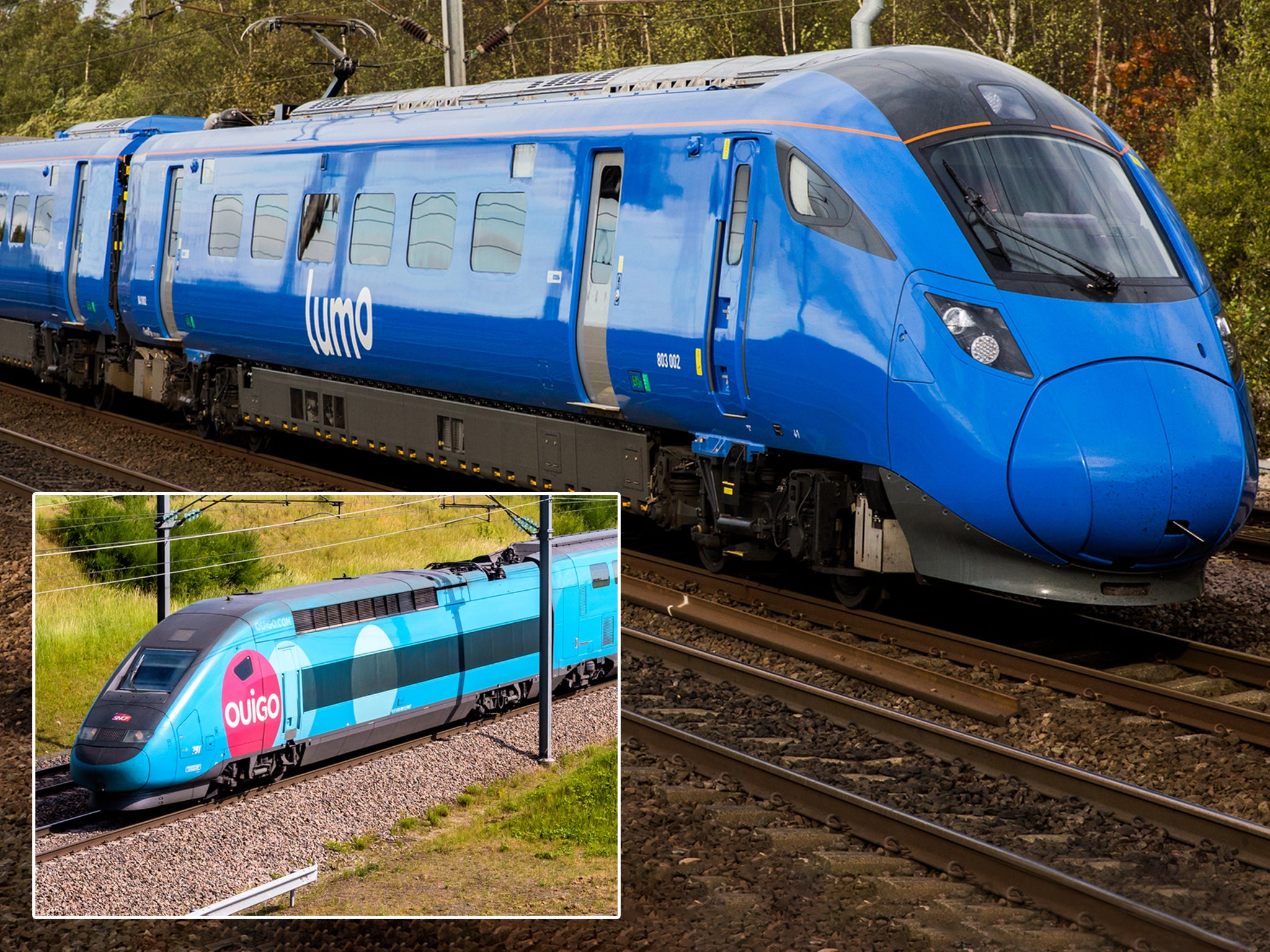What’s the best way to get to inaccessible Granada?
Simon Calder answers your questions on trips to Spain, Barbados dollars and budget train travel


Q I am going to Granada in April. It seems to be an awkward place to get to. Could you give me some advice on the easiest way to get there?
Name supplied
A An excellent choice. Granada has one of the most spectacular locations in Europe, filling a valley in the Sierra Nevada. The magnificent Moorish palace of the Alhambra soars above a city that provides indulgence as well as inspiration. As well as focusing on the dazzling city, you should look outwards at the startling mountain landscapes beyond Granada, which will still be draped with snow in April. The best way to enjoy the scenery is to head north from the Paseo de los Tristes into Sacromonte, a warren of whitewashed houses and troglodyte dwellings.
As you say, Granada is something of a challenge to reach. The Andalusian city has a perfectly good local airport, and from time to time airlines such as British Airways CityFlyer (from London City airport) and Monarch (from Gatwick, before the airline’s collapse) have flown there. No UK flights serve Granada direct, currently, and connections via the only significant alternatives – Madrid, Barcelona or Paris Orly – will prove expensive and cumbersome.
Happily, there is an obvious alternative: fly to Malaga, which has links from across Britain, and board a direct bus operated by Alsa from the airport to Granada. Departures are roughly hourly (though with a long gap in the afternoon) and take about 2h 15m on a spectacular journey into the mountains, for a fare of around €12 (£10.50). Advance booking is not normally required. You might also want to add a night in Malaga, a superb coastal city, before you head to Granada.
The bus journey will work perfectly well in the reverse direction too, but to make a virtue of Granada’s location I suggest you book the thrilling high-speed train ride from Granada to Madrid, taking just over three-and-a-half hours. You could add a night in the Spanish capital as an additional treat – or just head for the airport from Madrid Atocha station; direct Cercanias trains connect the two, and with a high-speed train ticket you should find the airport journey is added at no extra cost.

Q I am going to Barbados in June. Right now the rate for the Barbadian dollar is better against the pound than the US dollar. But the country takes both. What’s best to get the most out of my sterling?
Paul J
A This question seems to come up annually, but I am happy to tackle it in the hope that I can steer you and many other Caribbean-bound travellers in the right financial direction.
I began by checking yesterday’s rates at the Post Office online travel money service for £1. That will buy you 20 cents fewer than a year ago: B$2.19. But that is much more impressive numerically than the US$1.15 currently quoted by the Post Office. Naturally, when visiting a country, it seems logical to take the currency of that nation. There is, as you may expect, a catch. The Barbadian dollar is locked, rigidly, to the American dollar at a rate of B$2=US$1. So were you to opt for the visually much more pleasing Barbados currency, you would get an effective rate of less than US$1.10 for your hard-earned cash.
Traders on the island really don’t mind whether you settle a B$20 bill with local banknotes to that value, or use an American 10-dollar note instead. So you can arrive with a fistful of American dollars knowing that they will be accepted everywhere. Change from businesses will be returned in a random selection of American and Barbadian currencies; the locals innately calculate without a moment’s thought. Except for souvenirs, make sure you do not leave the island with any Barbadian dollars. US dollars are welcomed practically everywhere on earth, but currency from small Caribbean islands are not. Exactly the same advice applies for travel to the central American nation of Belize (which matches the Barbadian rate of two local dollars for one American) and the North Atlantic island of Bermuda, where the US and local currency are at par.

Q I read your Train Talk feature about Ouigo, the French low-cost train brand. Isn’t it basically what Lumo is between London and Edinburgh? OK, Lumo doesn’t nickel and dime on luggage, but other than that they’re a low-cost, single-class operation the same as Ouigo.
Neil W
A Last week I travelled from Aix-en-Provence in southern France to Disneyland Paris on a Ouigo high-speed, no-frills train. I have also used Lumo, the “open access” operator between London King’s Cross and Edinburgh, fairly frequently. A strong similarity is that they both use one-class, high-density seating. Another is attracting travellers from low-cost airlines such as easyJet and Ryanair. After that, the business models and passenger experience diverge markedly. Let me go through them one by one.
Ouigo, which uses old SNCF (French Railways) TGV rolling stock, was conceived as a very different experience from the traditional train trip. Tickets are sold only online. This cuts costs and differentiates Ouigo from “normal” SNCF high-speed trains. Conversely, I can happily queue up at a rail booking office anywhere in the UK and buy a Lumo ticket, which means a proportion of my fare will go to the vendor. I can also get a railcard discount on Lumo, which disrupts the “yield management” model underpinning low-cost travel. Ouigo does not accept French Railways discount cards.
Ouigo has strict luggage limits (small backpack plus roll-along case) with extra charges for bigger consignments, and has a minimum five-minute cut-off after which you are not getting on the train; on Lumo, 30 seconds is time enough. The “from” and “to” is important, as well. I boarded at a grim out-of-town station midway between Aix and Marseille airport and ended up at Disneyland Paris, a 40-minute suburban train ride from the centre of the French capital. Using a “secondary” station avoids SNCF competing with itself. But Ouigo uses exactly the same city-centre stations as LNER, the state-run incumbent, and is happy to lure passengers away from its rail rival – it is an independent operator.
Talking to Mark Smith, the international rail guru known as The Man in Seat 61, there is one more difference. He is alarmed at the “Ouigo-isation” of some SNCF services, whereby a normal train is replaced by the budget brand – reducing choice and flexibility. Lumo is purely additive, increasing capacity and providing valuable competition. I believe the UK could learn from Ouigo, though: I would be happy to see some ultra-low-cost operations, perhaps to and from London suburban stations with spare capacity, with fares that would help to lure travellers out of their cars.

Q I flew back from Australia last week. The original flight information stated I should check in on Friday 24 February. The flight was shown as departing at 12.10am. Apparently, I should have checked in on Thursday 23 February. The airline said it was my mistake and was very unhelpful, and refused us entry to the flight 24 hours later. We had to pay £3,000 for new flights back. All the paperwork, including boarding passes, stated 24 February. So how do I claim back the money we had to spend?
Julie R
A I read your question with a heavy heart, because this kind of confusion happens all too often. The most extreme case I have been close to involved an extremely expensive trip to the Yemeni island of Socotra; we were instructed to board a 1am flight, and one would-be traveller got his timing wrong by 24 hours – and was sleeping happily in his hotel while the flight was being called. With only one flight a week, he sadly lost thousands of pounds.
A good travel agent will be experienced in the potential muddle that flights in the very early hours can involve, and will always run through what needs to be done: for a 12.10am departure, as you now know, you should check in at around 10pm the night before. While many people, for good reasons, choose to book direct with the airline or through an online travel agent, this involves surrendering the expertise of travel professionals.
I am interested that you say the flight information stipulated that you should check in on Friday 24 February. If you have clear evidence of this, then you can challenge the airline (or agent, if you booked indirectly) and make a claim for your loss. But absent such proof, I cannot see that you can expect to get your money back. The airline has treated you as a no-show and is likely to hang on to your cash. A small consolation could be that you may be able to extract some fees and taxes from your original ticket home, but even this will probably prove fruitless if you booked through an online travel agent.
Email your question to s@hols.tv or tweet @simoncalder


Join our commenting forum
Join thought-provoking conversations, follow other Independent readers and see their replies
154Comments